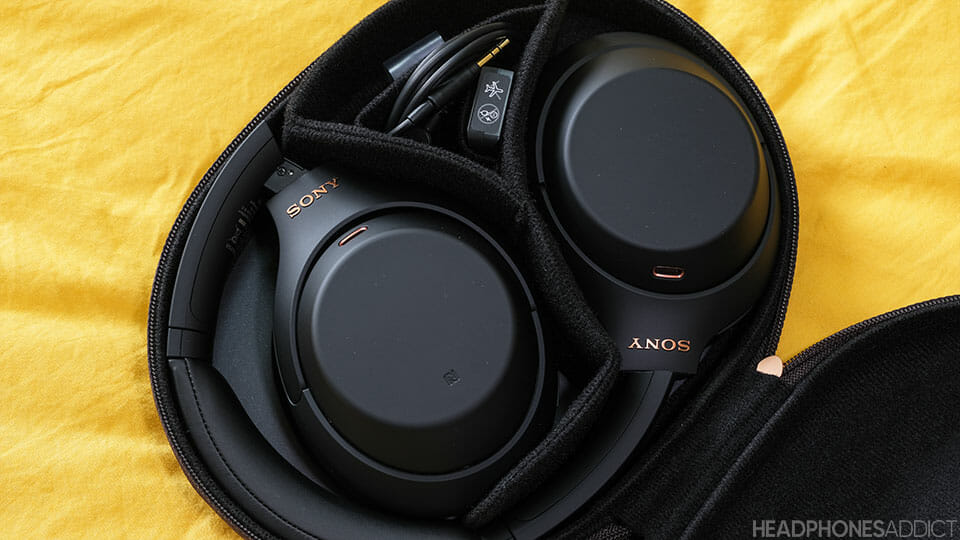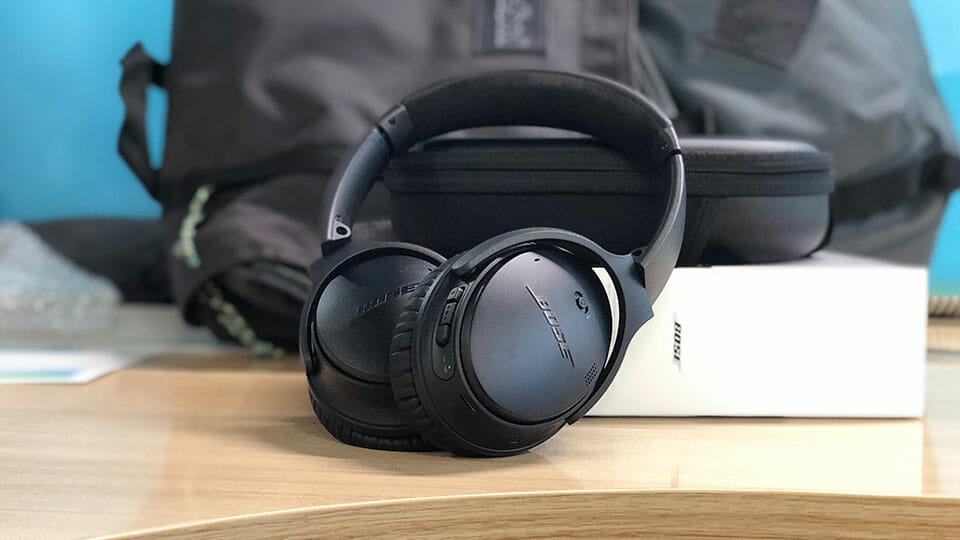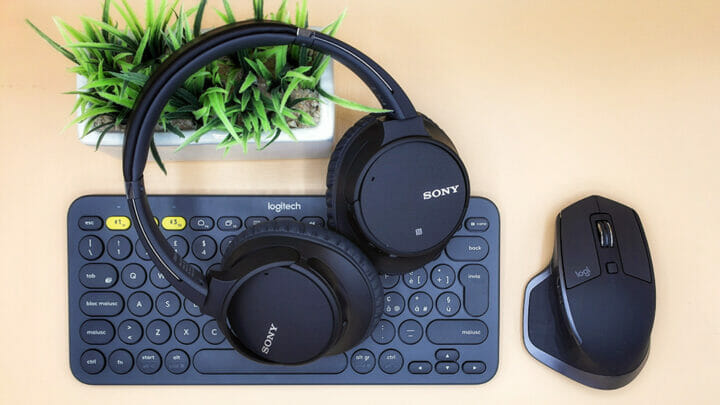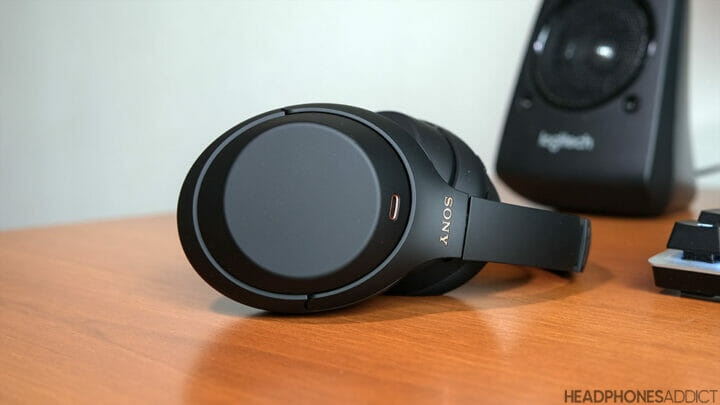NFC is a wireless technology for sharing data. You can find it in a range of products that carry the “N” indicator.

You can see the same icon in your smartphone’s quick settings menu. However, not many are familiar with how this technology works and what are its everyday applications.
In this article, you’ll find out:
- What is NFC?
- What are the benefits of using NFC?
- Most common use cases of this technology
- What headphones use the NFC for the pairing?
- What is the difference between NFC and RFID?
What is NFC?
The main job of NFC technology is data transfer. You can use it for simple identification purposes, like opening electronic door locks or contactless credit cards. You can even use it to transfer files, like images, from one mobile device to the other.
NFC works on 13.56 megahertz frequency and can transfer data with a speed of 106, 212, or 424 kilobits per second (around 0,053 megabytes).
The maximum range of NFC transmission is 4 inches (around 10 cm), but the range is usually much shorter (1,5 inches or 4 cm).
In the past decades, we used different kinds of wireless connection technologies to transfer data. While today’s leading technology in smartphones is Bluetooth and Wi-Fi, you most certainly have other built-in ways of over-the-air wireless communication.
Nowadays, almost everyone has NFC built into their phone. The NFC stands for “Near-Field Communication.” As the name suggests, this technology only works in a very short range.
How Does NFC Work?
Physically, the NFC chip looks like a small coil with a tiny chip and antenna built into it. That chip is small enough to store the necessary data, and the antenna strong enough to transfer it quickly.

First, you need to separate from active and passive NFC chips:
- Passive: The passive NFC has no power (no battery life) of its own. Instead, it receives the energy via induction when you place a device (smartphone or card reader) near a passive NFC chip. It works the same way as wireless charging, only with lower voltage. The coil receives enough energy to power up the chip, which sends its feedback information back to your smartphone (or card reader).
- Active: In contrast, an active NFC chip already has power. It is responsible for powering up passive chips or sharing bigger data between other active NFC devices (file transfer between two phones). Of course, the device with an active NFC chip can also turn into a passive state (if it’s on the receiving end).
NFC also differs based on modes of operating:
- Peer-to-peer: This mode is used between two devices with active NFC chips. For example, when you want to transfer files from one smartphone to the other. The same goes when establishing a connection between a transmitting device and headphones with a built-in NFC.
- Read/write mode: In this mode, the active device is reading information from a passive NFC chip. For example, if you have NFC tags. The NFC chip carries specific information that triggers predetermined commands in your smartphone.
- Card emulation: This mode is reserved for credit cards that support contactless payments. More and more debit cards already have built-in NFC chips.
NFC In Headphones
The quick answer is faster pairing with your headphones. While Bluetooth offers a reliable, long-range connection, the Bluetooth pairing process isn’t the fastest.
That is where NFC comes in handy. It ensures an instant pairing process between two Bluetooth devices together with a simple tap.
In contrast, Bluetooth pairing requires several steps of authentication to allow transition into pairing mode. That’s the same reglardless of what Bluetooth devices or Bluetooth connection version you’re using.
How Does It Work?
For successful pairing with each other, you need to enable both NFC and a Bluetooth connection. Headphones need to be turned ON. When you put your phone over the NFC logo on the device, you receive the notification message with a device name. You finish the pairing by clicking “OK.”
In this case, you receive all the necessary pairing data via NFC, while Bluetooth takes over the connectivity and audio transmission between your mobile device and a headset.
What Brands Are Using NFC For Pairing?
Sony is the most well-known brand to use NFC chips in their products to pair them together. Their WH-1000XM4 model have it, as well as their entire line-up of Bluetooth devices like speakers.
Apart from them, you also find NFC in Jabra, Phiaton, MEE Audio, and Bose headphones.

Other Use For NFC?
Since everything is slowly digitalizing, more and more things are moving in the virtual world. Why carry so many items in your pocket if you only need your smartphone.
Here are some real-world features of NFC that can make your life easier:
Credit cards
The most widespread usage scenario is NFC payments. Almost all retailers already have terminals for contactless payment cards. And since they’re compatible with NFC, why not use your phone instead of your wallet.
That isn’t just a more practical way of paying, but it can also be safer. Services like Apple Pay and Android Pay use encryption to protect your data even if your phone gets stolen.
If that occurs, you can wipe out all your information remotely via dedicated apps like “Find my phone.”
NFC tags
There are many ways you can use NFC tags. They can hold more information than regular RFID chips, so you can use them to activate a series of commands.
Some people like to place them around their house. It works best if you have lots of smart home appliances.
That way, you can make a tag that will dim the lights and open a TV simultaneously. Or set the alarm when you go outside and initiate a Google Maps navigation to a selected destination.
Thanks to the wide range of features, possibilities are endless.
Tags can also replace something called QR codes since many Android, and Apple iOS phones (first iPhone to have NFC was iPhone 6) don’t have preinstalled scanning apps. You simply turn on the NFC and hover over the chip to get information off of a business card, advert, or eating menu in the restaurant.
Also, some brands use tags for the brand protection feature. They integrate a chip inside the product (like shoes) so that the end-user verifies its authenticity. It’s a touchpoint many companies are adopting.
NFC vs. RFID: The Difference?
RFID is a wide category of frequency spectrums, whereas NFC is a tech that works within RFID standard.
NFC is more widely popular for everyday use since it’s more user focused. NFC is better than RFID because:
- The connection between the two devices together is more secure (necessary for contactless payments).
- NFC-enabled devices (like mobile devices) can be both active or passive.
- Can transmit larger quantities of data.
In contrast, RFID technology is normally used in simple ID authentication. RFID is used in:
- retail to track inventory
- cards to unlock electronic doors
- chips for identifying pets or livestock
- shops to prevent thieves from going past security scanners
- electronic vignettes for traffic
- at sporting events where a sensor measures a runner’s speed.
The name “RFID” stands for “radio-frequency identification.” It’s a wide branch of frequency spectrums that are used for near or distance identification. Data speeds can be many times faster or slower, depending on communication expectations.
The NFC uses a specific frequency spectrum (“high-frequency” or “HF” for short), whereas RFID covers radio waves from 120 kHz to 10 GHz.

From a childhood fascination with sound, Peter’s passion has evolved into a relentless pursuit of the finest headphones. He’s an audio expert with over 5 years of experience in testing both audiophile and consumer-grade headphones. Quote: “After many years, I can confidently tell which headphones are good and which are terrible.” Find his honest opinion in his reviews.




